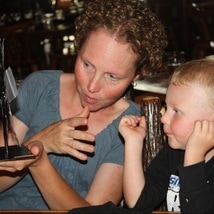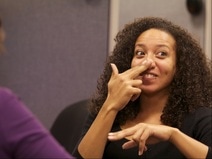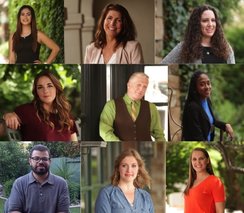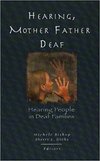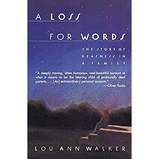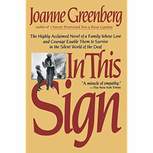The Coda experience
American Sign Language as a
|
|
Much of the information we have on heritage language users comes from the spoken language field. Heritage language users are raised in a home where a language other than English is used, often because their parents are immigrants to the United States and speak the language of their home country. For example, you may have had a classmate or friend who spoke English, but whose parents only spoke Spanish.
|
Heritage language users understand the heritage language, which, for Compass applicants, is ASL, and use it with various degrees of proficiency. They also use and understand English. Since being bilingual falls along a continuum, this makes heritage language users like you bilingual to some degree (Valdes, 2014; Pizer, Walters & Meier, 2013).
|
In families with immigrant parents and families with signing Deaf parents, children who are bilingual may serve as interpreters between their parents and the English speaking community (Pizer, Walters & Meier, 2013). This is more appropriately known as child language brokering. Young children have a natural tendency to want to be helpful, so they often assist parents with communication (Napier, 2013).
|
Codas have heritage language acquisition experiences similar to those of spoken heritage language speakers, as described by Valdes (2014). The ASL acquired by Codas usually reflects the experiences of their parents. If Deaf parents did not have access to situations and contexts where more formal ASL is used, then Codas will have the same informal or casual range of vocabulary and language use. As a result, Codas don’t always acquire full mastery of ASL; however, compared to hearing people who learn ASL in school, Codas seem very superior in their language use in some ways, yet not in others. For example, Codas often know ASL and use the language following an internalized set of grammatical rules, but since they haven’t studied ASL, they often can’t explain them.
As one Coda noted, “We are neither Deaf nor hearing. We are both Deaf and hearing” (Preston, 1994, p.236).
Bilingualism
Watch this video and learn more about bilingualism as it applies
directly to the Coda experience.
directly to the Coda experience.
Deaf Culture
Culture influences people's beliefs, values, norms, ways of behaving and
even how they view the world. It is a fact that Deaf people have their own culture that is separate and distinct from the American hearing culture. Watch the video below which provides a perspective on Deaf culture. Participants in the Compass program will have the opportunity to continue to explore these ideas.
even how they view the world. It is a fact that Deaf people have their own culture that is separate and distinct from the American hearing culture. Watch the video below which provides a perspective on Deaf culture. Participants in the Compass program will have the opportunity to continue to explore these ideas.
To learn more about Deaf people as a linguistic and cultural group (and see an example of International Sign Language) visit the World Federation of the Deaf website.
Deaf history
Even though we grew up in the Deaf community, we often have not learned much about the culture that makes up such a big part of our identity! The Deaf community is not only considered to be its own unique culture, but
has a rich history that has shaped its values of today. Take a moment and view this timeline of Deaf history: http://www.deafjam.org/timeline.html
has a rich history that has shaped its values of today. Take a moment and view this timeline of Deaf history: http://www.deafjam.org/timeline.html
Professional organization for Codas
CODA International is an organization of, by and for Codas. Take a look at this website to find out more about the organization, become a member, and find out about upcoming conferences.
http://www.coda-international.org
http://www.coda-international.org
Research on the Coda experience
Coda Pride: Coda Pride is a documentary about Children of Deaf
Adults, our relationships, our experiences, and our proud bilingual community.
Adults, our relationships, our experiences, and our proud bilingual community.
Heritage Signers: Language Profile Questionnaire Master's of Arts in Interpreting Studies (MAIS) Theses. Paper 27. (Isakson, S. K., 2016) Available at:
http://digitalcommons.wou.edu/theses/27/
http://digitalcommons.wou.edu/theses/27/
Just for Fun!
Watch this little Koda making sure her parents don't miss out on
her school's holiday program!
her school's holiday program!
Coda, Koda: What's the difference?
Coda stands for Child of Deaf Adults, while Koda stands for Kids of Deaf Adults. Coda generally refers to individuals who are adults, and Koda refers to younger kids.
KODAheart is an organization developed to provide support and resources for hearing kids of deaf adults and their families. To learn more about what they do and can provide, visit http://kodaheart.com.
Be sure to check out their resources page for Koda organizations near you, resources for parents, Top Ten Lists of everything from hashtags you should be following on Twitter, best family road trips, and linguistic development ideas!
KODAheart is an organization developed to provide support and resources for hearing kids of deaf adults and their families. To learn more about what they do and can provide, visit http://kodaheart.com.
Be sure to check out their resources page for Koda organizations near you, resources for parents, Top Ten Lists of everything from hashtags you should be following on Twitter, best family road trips, and linguistic development ideas!
Codas as interpreters
Wondering how you can become an interpreter? Meet some Codas who share the journeys they took to becoming professional interpreters!
Barry
Genaere
Nathan
The Value of Coda interpreters
Codas offer a unique perspective as interpreters, based on a lifetime of experience in the Deaf community. Watch this video to see a Deaf perspective on Coda interpreters.
Codas in interpreting programs
There are not many interpreting programs that focus on the unique learning needs of Codas. Unfortunately, the Coda heritage language experience is typically not accurately reflected in the curriculum, and misunderstandings about their experience abounds (NCIEC, 2016). Codas may be consulted by others as an expert on the Deaf community, while at the same time being viewed as having an unfair advantage. Codas may often feel a contradiction between what was learned at home or in the Deaf community, and what is taught in the classroom. As a result, many Codas feel isolated in college interpreting programs.
Codas in interpreting programs designed for second language learners face a paradox: some classes are too easy; yet at the same time, cover concepts they have not learned yet.
Topics that Codas in the study found to be beneficial were linguistics of ASL, and ethics in interpreting. They also found other Codas in the program, either as teachers or peers to be potentially helpful.
Tips for Codas in interpreting programs:
- Look for programs with other Codas as instructors or peers and culturally Deaf instructors
- Don’t skip all the language classes; focus on honing your fluency
- Look for programs in which the language of instruction is ASL, if that is your preferred language for learning
- Look for programs that offer opportunities for live interaction with Deaf individuals
- Talk to your instructors about what you need, based on your Coda experience
Read more about this study at:
http://www.interpretereducation.org/wp-content/uploads/2014/02/Final-Heritage-Signer-FG-Report-12-16.pdf
http://www.interpretereducation.org/wp-content/uploads/2014/02/Final-Heritage-Signer-FG-Report-12-16.pdf
Research on Coda interpreters
The Cost of Invisibility: Codas and the Sign Language Interpreting Profession. (Williamson, 2012)
Read it at: https://www.streetleverage.com/2012/11/the-cost-of-invisibility-codas-and-the-sign-language-interpreting-profession/
Watch it here:
Read it at: https://www.streetleverage.com/2012/11/the-cost-of-invisibility-codas-and-the-sign-language-interpreting-profession/
Watch it here:
Deaf-Parented Interpreters: A Challenge to the Status Quo in Sign Language Interpreter Education. (Williamson, 2015)
Read it at: https://www.streetleverage.com/2015/05/deaf-parented-interpreters-a-challenge-to-the-status-quo-in-sign-language-interpreter-education/
Watch it here:
Read it at: https://www.streetleverage.com/2015/05/deaf-parented-interpreters-a-challenge-to-the-status-quo-in-sign-language-interpreter-education/
Watch it here:
Heritage learner to professional interpreter: Who are deaf-parented interpreters and how do they achieve professional status? Master's of Arts in Interpreting Studies (MAIS) Theses. 22. (Williamson, 2015) Available at: http://digitalcommons.wou.edu/theses/22/
Books
References on this page
Napier, J. (2013). Sign language brokering experiences in the Deaf community. Retrieved from: https://lifeinlincs.org/2013/12/20/sign-language-brokering-experiences-in-the-deaf-community/
National Consortium of Interpreter Education Centers (2016). Understanding the challenges of heritage signers. A needs assessment report prepared for the Rehabilitation Services Administration.
Pizer, G., Walters, K., Meier, R. P. (2013). “We communicated that way for a reason”: Language practices and language ideologies among hearing adults whose parents are Deaf. Journal of Deaf Studies and Deaf Education, 18 (1), pp. 77-92.
Preston, P. (1994). Mother father deaf. Cambridge, MA: Harvard University Press.
Valdes, G. (2014). Heritage language students: Profiles and possibilities. In Wiley, T. G., Peyton, J. K., Christian, D., Moore, S. C., & Liu, N. (Eds.) Handbook of heritage, community, and native American languages in the United States: Research, policy and educational practice. Routledge: New York.
National Consortium of Interpreter Education Centers (2016). Understanding the challenges of heritage signers. A needs assessment report prepared for the Rehabilitation Services Administration.
Pizer, G., Walters, K., Meier, R. P. (2013). “We communicated that way for a reason”: Language practices and language ideologies among hearing adults whose parents are Deaf. Journal of Deaf Studies and Deaf Education, 18 (1), pp. 77-92.
Preston, P. (1994). Mother father deaf. Cambridge, MA: Harvard University Press.
Valdes, G. (2014). Heritage language students: Profiles and possibilities. In Wiley, T. G., Peyton, J. K., Christian, D., Moore, S. C., & Liu, N. (Eds.) Handbook of heritage, community, and native American languages in the United States: Research, policy and educational practice. Routledge: New York.

